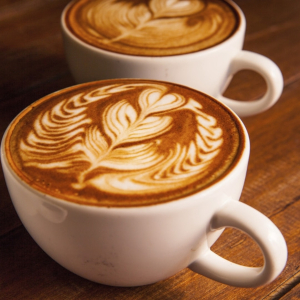We’ve covered the basic Knife Skills every serious cook should know. Now, it’s time for an overview of the stirring skills we all need to complete our food manipulation repertoires. As you’ll see, it’s more than just mixing one ingredient into another, or keeping the Red Sauce from burning!
Here’s a mouthwatering YouTube video of food blogger Zeke
Brown’s favourite pastime: Stirring the Red Sauce!
Essential Stirring Skills in no particular order:
Stirring: Tool – Spoon. This familiar activity simply entails keeping liquids moving gently in a bowl or cooking pot. It’s used to ensure that foods are uniformly exposed to cooking heat and don’t stick. It’s also used to ensure that skin- and crust-prone foods don’t form such unfortunate surface flaws.
Blending: Tool – Spoon (sometimes, Spatula or Wire Whisk). A slow to medium speed stirring motion is used to combine two or more ingredients, either in a mixing bowl or cooking vessel. Always add Wet Ingredients to Dry to ensure efficient blending and avoid lumps.
Beating: Tool – Wire Whisk or Fork. Using a spirited, aggressive Stirring technique to combine ingredients that are difficult to distribute evenly with one another, such as Oil and Vinegar for Vinaigrettes. Also used for combining Egg Yolks and Whites. without entraining excess air in the mixture.
Whisking: Tool – Wire Whisk. Beating with a Whisk entrains as much air as possible in a mixture, which will help produce the desired fluffy or velvety texture characteristic of many recipes. Meringue and Foamed Egg Whites are two classic applications of Whisking. But the technique is also used to insinuate modest amounts of air in Baking Powder-leavened Batters.
Folding: Tool – Spatula. This technique is used when an air-entrained food is to be combined with something heavier; for example, when Foamed Egg Whites are gently blended with conventional Batter to prepare Angel Food Cake. The objective is to retain as much of the air as possible in the final mixture to ensure a light, fluffy final result. The key to Folding is to plunge the Spatula gently into the mixture and then lift it up, carrying the heavier Batter to the top and letting it fall gently into the air-entrained ingredient. Successful, consistent Folding takes some practice. Don’t be discouraged.
Swirling: Tool – Spoon Handle. This is an unofficial culinary term which refers to the adding an ingredient of contrasting colour to a existing single-colour mixture. One common application is found in the Dairy business where manufacturers have long produced flavours such as Chocolate, Strawberry and Butterscotch Swirl. The barrista’s art of ‘painting’ pictures on the surfaces of Coffee drinks by the skillful pouring of Milk is perhaps the ultimate realization of the art of the Swirl. (See photo top of page.)
Related Mixing Techniques…
Kneading: Tool – Your Hands or A Stand Mixer with Dough Blade. Combines the Wet and Dry ingredients for Yeast-raised Breads and Rolls thoroughly while developing the elasticity of the Gluten i n the Bread Flour ensuring a uniform texture and good rise in the final product. This technique involves pressing and pushing with the heel of your palm to stretch the dough, folding it over on itself and repeating the stretch. Some recipes insist that you knead their Doughs at least 100 times! That’s where the Stand Mixer comes in handy.
Creaming: Tool – Spatula. This operation is used to soften heavy Fats – most often Butter or Shortening, when Baking – and smoothly blend them together with Dry Ingredients such as Sugar or Flour before adding any Wet ingredients. An essential step in making most Cakes.
Cutting-In: Tool – Table Knife, Pasty Cutter or Food Processor. Purists will still use a table knife to cut-in, and many modern cooks will use he knife blade in their Food Processor on short ‘Pulses’ to accomplish this task. The Pastry Cutter is a special tool usually composed of several stiff curved wires joined to both ends of a wooden, metal or plastic handle. It is used to combine Fat and Dry ingredients when baking, before adding the Wet ingredients. The idea is to make the Fat particles as small as possible and distribute them evenly throughout the Dry ingredients. That’s how you get light, flaky Pastry, and fluffy Biscuits and Steamed Dumplings.
And that about covers it…
If I’ve left any Stirring, Blending or Combining skill out, please let me know! Back in few days with another installment of Essential Cooking Skills…
~ Maggie J.

